저합금 분말 는 자동차에서 항공우주에 이르기까지 다양한 산업 분야에서 중요한 역할을 합니다. 저합금 분말의 다재다능함과 고유한 특성 덕분에 고성능 부품을 제조하는 데 없어서는 안 될 필수 요소입니다. 이 종합 가이드에서는 저합금 분말의 구성부터 용도, 특성 등 저합금 분말에 대해 알아야 할 모든 것을 살펴봅니다. 업계 전문가든 호기심 많은 독자이든, 이 글은 대화와 흥미를 유지하면서 심층적인 지식을 제공하도록 설계되었습니다.
저합금 분말 개요
저합금 분말은 크롬, 몰리브덴 또는 니켈과 같은 합금 원소를 소량 함유한 엔지니어링 금속 분말입니다. 이러한 분말은 모재 금속의 기계적 특성, 내마모성, 인성을 개선하도록 특별히 설계되었습니다. 일반적으로 분말 야금에서 고강도, 내구성 및 정밀한 치수가 필요한 부품을 제조하는 데 사용됩니다.
저합금 분말은 순수 금속이나 고합금 소재에 비해 우수한 기계적 특성을 가진 소재를 필요로 하는 분야에서 널리 사용됩니다. 저합금 분말의 합금 원소를 신중하게 선택하면 최종 제품이 고온, 부식성 환경, 무거운 하중과 같은 극한 조건을 견딜 수 있습니다.
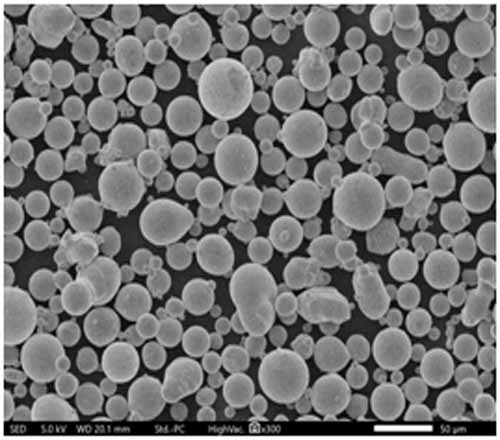
저합금 분말의 주요 세부 사항
| 매개변수 | 설명 |
|---|---|
| 구성 | Mo, Cr, Ni와 같은 1-5% 합금 원소가 포함된 베이스 메탈 |
| 속성 | 고강도, 내마모성, 인성 및 경도 향상 |
| 일반적인 애플리케이션 | 자동차 부품, 항공우주 부품, 공구 및 중장비 |
| 제조 프로세스 | 원자화, 소결 및 열간 등방성 프레스(HIP) |
| 일반적인 합금 원소 | 크롬, 몰리브덴, 니켈, 망간, 바나듐, 티타늄 |
| 장점 | 향상된 기계적 특성, 비용 효율적이고 다양한 활용성 |
저합금 분말의 구성
저합금 분말의 구성을 이해하는 것은 특정 용도에 적합한 재료를 선택하는 데 매우 중요합니다. 이러한 분말의 기본 금속은 일반적으로 철이지만 니켈 및 티타늄과 같은 다른 금속도 사용할 수 있습니다. 소량으로 첨가되는 합금 원소는 파우더의 특성에 큰 영향을 미칩니다.
표: 저합금 분말의 일반적인 합금 원소
| 합금 원소 | 일반적인 농도(%) | 목적 |
|---|---|---|
| 크롬(Cr) | 1-3% | 내식성 및 경도 향상 |
| 몰리브덴(Mo) | 0.5-2% | 고온에서의 강도, 내마모성 향상 |
| 니켈(Ni) | 1-5% | 인성 및 연성 향상 |
| 바나듐(V) | 0.1-1% | 입자 미세화, 내마모성 향상 |
| 티타늄(Ti) | 0.1-0.5% | 강도 및 내식성 향상 |
| 망간(Mn) | 0.5-2% | 경화성, 내마모성 향상 |
왜 이러한 요소일까요?
- 크롬(Cr): 뛰어난 내식성으로 잘 알려진 크롬은 열악한 환경을 위해 설계된 저합금 분말의 핵심 원소입니다. 또한 경도를 향상시켜 최종 제품의 내구성을 높여줍니다.
- 몰리브덴(Mo): 이 원소는 고온에서 높은 강도가 필요한 응용 분야에 매우 중요합니다. 몰리브덴은 내마모성을 향상시켜 기어 및 샤프트와 같은 부품의 수명을 보장합니다.
- 니켈(Ni): 니켈은 저합금 분말의 인성과 연성을 향상시켜 응력이나 변형이 심한 부품에 적합합니다.
- 바나듐(V): 바나듐은 입자 정제에 필수적인 성분으로 내마모성을 포함한 재료의 전반적인 기계적 특성을 향상시킵니다.
- 티타늄(Ti): 저합금 분말에 티타늄을 첨가하면 내식성을 유지하면서 강도를 높일 수 있어 항공우주 분야에 이상적입니다.
의 특성 저합금 분말
저합금 분말의 특성은 합금 원소의 신중한 선택과 제조 공정의 정밀한 제어를 통해 맞춤화됩니다. 이러한 특성에 따라 다양한 용도에 대한 파우더의 적합성이 결정됩니다.
표: 저합금 분말의 특성
| 특징 | 설명 |
|---|---|
| 높은 강도 | 저합금 분말은 강도가 우수한 부품을 생산하도록 설계되었습니다. |
| 내마모성 | Mo 및 Cr과 같은 원소의 존재로 인해 내마모성이 향상되었습니다. |
| 인성 | 인성이 향상되어 까다로운 애플리케이션에서 더 나은 성능을 발휘합니다. |
| 내식성 | Cr 및 Ti와 같은 합금 원소는 부식에 대한 저항력이 뛰어납니다. |
| 치수 안정성 | 저합금 분말로 만든 부품은 스트레스를 받아도 치수를 유지합니다. |
| 피로 저항 | 내피로성이 뛰어나 주기적인 로딩에 이상적인 파우더입니다. |
이러한 특성이 중요한 이유
- 높은 강도: 부품이 무거운 하중이나 높은 압력에 노출되는 응용 분야에서는 강도가 가장 중요한 고려 사항입니다. 저합금 분말은 이러한 조건을 고장 없이 견딜 수 있는 부품을 생산하도록 설계되었습니다.
- 내마모성: 자동차 및 툴링과 같은 산업에서 부품은 종종 마찰과 마모를 경험합니다. 저합금 분말의 내마모성은 부품의 수명을 연장하여 잦은 교체 필요성을 줄여줍니다.
- 인성: 인성은 재료가 에너지를 흡수하고 부러지지 않고 변형되는 능력입니다. 이 특성은 파손 없이 충격이나 응력을 견뎌야 하는 부품에 필수적입니다.
- 내식성: 부식은 부품의 수명을 크게 단축시킬 수 있습니다. 크롬과 같은 원소가 포함된 저합금 분말은 부식에 대한 내성이 뛰어나 열악한 환경에서 사용하기에 이상적입니다.
- 치수 안정성: 항공우주 및 자동차 산업과 같이 작은 편차에도 심각한 문제가 발생할 수 있는 산업에서는 정밀한 치수를 유지하는 것이 매우 중요합니다. 저합금 분말은 다양한 조건에서도 부품이 안정적으로 유지되도록 보장합니다.
- 피로 저항: 반복적인 하중 사이클을 겪는 부품에는 내피로성이 필수적입니다. 저합금 분말은 피로 파괴에 굴복하지 않고 이러한 조건을 견딜 수 있도록 설계되었습니다.
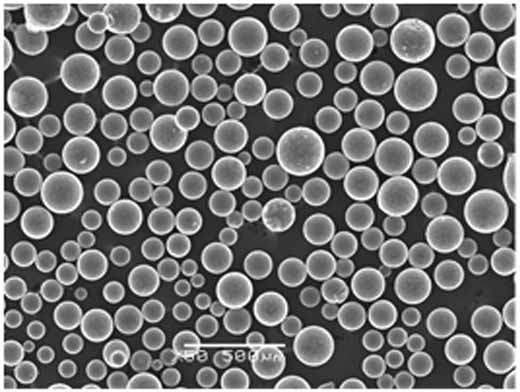

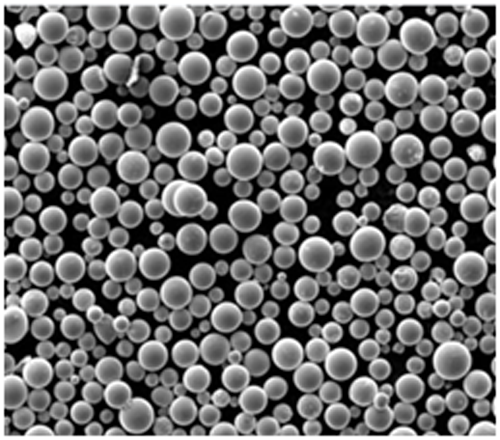
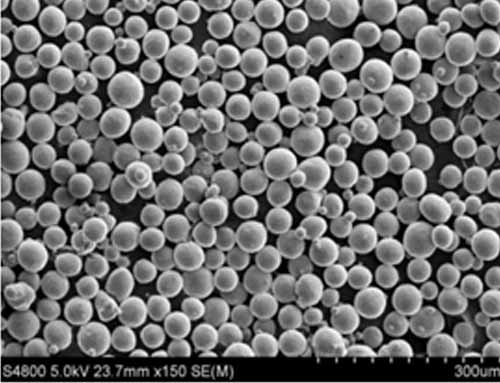

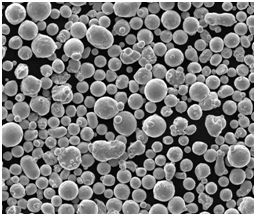
저합금 분말의 응용 분야
저합금 분말은 믿을 수 없을 정도로 다재다능하며 광범위한 산업 분야에서 사용됩니다. 기계적 특성을 향상시키는 능력은 강도, 내구성 및 정밀도가 필요한 응용 분야에 이상적입니다.
표: 저합금 분말의 일반적인 응용 분야
| 산업 | 애플리케이션 | 혜택 |
|---|---|---|
| 자동차 | 기어, 베어링, 캠축, 커넥팅 로드 | 고강도, 내마모성, 내피로성 |
| 항공우주 | 터빈 블레이드, 엔진 부품, 구조 부품 | 경량, 고강도, 내식성 |
| 툴링 | 절삭 공구, 금형, 금형 | 내마모성, 인성, 정밀도 |
| 중장비 | 기어박스, 유압 부품 | 강도, 내구성, 내식성 |
| 석유 및 가스 | 드릴 비트, 밸브, 파이프라인 | 고강도, 내마모성 및 내식성 |
| 의료 | 임플란트, 수술 도구 | 생체 적합성, 강도, 내식성 |
| 방어 | 장갑차, 무기 시스템 | 인성, 내마모성, 강도 |
| 전자 제품 | 커넥터, 하우징 | 치수 안정성, 내식성 |
| 에너지 | 풍력 터빈 부품, 원자로 부품 | 강도, 내피로성, 내식성 |
| 해양 | 프로펠러, 엔진 부품 | 내식성, 내마모성, 인성 |
실제 사례
- 자동차: 자동차 산업에서 저합금 분말은 기어 및 캠축과 같은 중요한 부품을 제조하는 데 사용됩니다. 이러한 부품은 엔진 작동의 스트레스를 견딜 수 있도록 높은 강도와 내마모성이 필요합니다.
- 항공우주: 제트 엔진의 터빈 블레이드는 고온에서 강도와 안정성을 유지하여 안전하고 효율적인 작동을 보장하는 능력 때문에 종종 저합금 분말로 만들어집니다.
- 의료: 수술 도구와 임플란트는 강하고 생체 적합해야 합니다. 티타늄을 사용한 저합금 분말은 이러한 요구 사항을 충족하기 위해 일반적으로 사용되어 내구성이 뛰어나고 안전한 의료 기기를 제공합니다.
저합금 분말의 장점
저합금 분말은 다양한 응용 분야에서 매우 유리한 고유한 특성 조합을 제공합니다. 이러한 분말이 다른 재료와 차별화되는 특정 이점에 대해 자세히 살펴보겠습니다.
표: 저합금 분말의 장점
| 이점 | 설명 |
|---|---|
| 비용 효율성 | 저합금 분말은 일반적으로 고합금 대안보다 저렴합니다. |
| 다용도성 | 다양한 산업 분야에서 광범위한 응용 분야에 적합합니다. |
| 향상된 기계적 특성 | 순수 금속에 비해 향상된 강도, 내마모성 및 인성. |
| 맞춤화 | 특정 응용 분야 요구 사항을 충족하도록 조성을 조정할 수 있습니다. |
| 치수 정밀도 | 정밀한 치수와 엄격한 공차를 가진 부품 제조에 이상적입니다. |
| 환경 저항성 | 가혹한 환경에서 부식, 열 및 마모에 대한 탁월한 저항성을 제공합니다. |
이러한 장점이 중요한 이유
- 비용 효율성: 저합금 분말은 고성능 부품 제조를 위한 비용 효율적인 솔루션을 제공합니다. 고합금 분말에 비해 더 낮은 가격으로 유사한 이점을 제공하여 비용에 민감한 산업에 매력적인 옵션이 됩니다.
- 다용도성: 자동차에서 항공 우주에 이르기까지 다양한 산업에서 저합금 분말을 사용할 수 있다는 것은 다재다능함을 보여줍니다. 이는 다양한 응용 분야에서 성능을 최적화하려는 제조업체에게 적합한 재료가 됩니다.
- 향상된 기계적 특성: 합금 원소의 첨가는 기본 금속의 기계적 특성을 크게 향상시킵니다. 이는 까다로운 조건을 견딜 수 있는 더 강하고 내구성이 뛰어난 부품으로 이어집니다.
- 맞춤화: 저합금 분말의 주요 장점 중 하나는 특정 요구 사항을 충족하도록 조성을 맞춤화할 수 있다는 것입니다. 이를 통해 제조업체는 향상된 내마모성, 더 높은 강도 또는 더 나은 내식성이든 특정 응용 분야에 맞게 재료를 최적화할 수 있습니다.
- 치수 정밀도: 저합금 분말은 엄격한 공차와 정밀한 치수를 가진 부품을 생산하는 데 이상적입니다. 이는 사소한 편차조차도 심각한 문제로 이어질 수 있는 항공 우주 및 자동차와 같은 산업에서 특히 중요합니다.
- 환경 저항성: 고온 또는 부식성 물질과 같은 가혹한 환경에 부품이 노출되는 응용 분야에서 저합금 분말은 우수한 저항성을 제공하여 더 긴 수명과 유지 관리 비용 절감을 보장합니다.
저합금 분말의 단점 및 제한 사항
저합금 분말은 많은 이점을 제공하지만 특정 응용 분야에 재료를 선택할 때 고려해야 할 특정 제한 사항도 있습니다.
표: 저합금 분말의 단점 및 제한 사항
| 단점 | 설명 |
|---|---|
| 제한된 합금 원소 범위 | 합금 원소의 비율이 제한되어 특성을 제한할 수 있습니다. |
| 극한 환경에 적합하지 않음 | 더 극한 조건에는 고합금 분말이 필요할 수 있습니다. |
| 가공 복잡성 | 원하는 특성을 얻으려면 제조 중에 정밀한 제어가 필요합니다. |
| 취성 가능성 | 일부 저합금 분말은 올바르게 처리하지 않으면 취성이 될 수 있습니다. |
| 제한된 내식성 | 개선되었지만 내식성은 스테인리스강과 일치하지 않을 수 있습니다. |
이러한 제한 사항이 중요한 이유
- 제한된 합금 원소 범위: 저합금 분말의 합금 원소 범위는 약 1-5%로 제한됩니다. 이는 특히 더 높은 비율의 합금 원소를 포함할 수 있는 고합금 분말과 비교할 때 재료가 특정 특성을 달성하는 능력을 제한할 수 있습니다.
- 극한 환경에 적합하지 않음: 고온 환경 또는 고도로 부식성 분위기와 같은 극도로 가혹한 조건의 응용 분야의 경우 고합금 분말이 더 나은 선택일 수 있습니다. 저합금 분말은 이러한 시나리오에서 필요한 보호 또는 성능을 제공하지 못할 수 있습니다.
- 가공 복잡성: 저합금 분말의 제조 공정은 원하는 특성을 얻기 위해 정밀한 제어가 필요합니다. 공정의 편차는 필요한 사양을 충족하지 못하는 제품으로 이어져 잠재적인 고장 또는 성능 저하로 이어질 수 있습니다.
- 취성 가능성: 올바르게 처리하지 않으면 저합금 분말이 취성이 되어 응력 하에서 균열이나 파손되기 쉽습니다. 이는 인성이 중요한 응용 분야에서 특히 우려됩니다.
- 제한된 내식성: 저합금 분말은 순수 금속에 비해 향상된 내식성을 제공하지만, 특히 고도로 부식성 환경에서는 스테인리스강과 같은 재료에서 제공하는 보호 수준에 미치지 못할 수 있습니다.
특정 금속 분말 모델
저합금 분말은 다양한 모델로 제공되며, 각 모델은 특정 요구 사항을 충족하도록 설계되었습니다. 다음은 인기 있는 저합금 분말 모델 10가지의 예와 해당 설명 및 응용 분야입니다.
표: 인기 있는 저합금 분말 모델
| 모델 | 구성 | 속성 | 애플리케이션 |
|---|---|---|---|
| FeMo10 | Fe + 10% Mo | 고강도, 우수한 내마모성 | 자동차 기어, 항공 우주 부품 |
| FeNi5 | Fe + 5% Ni | 인성 및 연성 증가 | 구조 부품, 커넥터 |
| FeCr3 | Fe + 3% Cr | 향상된 내식성, 우수한 경도 | 해양 부품, 도구 |
| FeV1 | Fe + 1% V | 향상된 내마모성, 결정립 미세화 | 절삭 공구, 고응력 부품 |
| FeMn2 | Fe + 2% Mn | 경화성 향상, 내마모성 | 베어링, 샤프트, 기어 |
| FeMo2Ni4 | Fe + 2% Mo + 4% Ni | 균형 잡힌 강도와 인성 | 항공 우주 구조 부품, 자동차 |
| FeCrMoNi | Fe + Cr + Mo + Ni (맞춤형 비율) | 다재다능한 특성, 특정 응용 분야에 맞게 조정 | 다양한 산업 |
| FeTi0.5 | Fe + 0.5% Ti | 향상된 강도, 우수한 내식성 | 항공 우주 패스너, 의료 임플란트 |
| FeMnCrNiV | Fe + Mn + Cr + Ni + V (맞춤형 혼합) | 우수한 내마모성, 인성 및 내식성 | 고성능 구성 요소 |
| FeMoCrNi2V1 | Fe + Mo + Cr + Ni + V | 고강도, 우수한 내마모성 및 내식성 | 석유 및 가스, 항공 우주 부품 |
자세한 설명
- FeMo10: 이 모델은 10% 몰리브덴을 함유한 철을 특징으로 하며 고강도와 우수한 내마모성을 제공합니다. 고응력과 마모를 견뎌야 하는 기어 및 구조 부품과 같은 부품에 대해 자동차 및 항공 우주 산업에서 일반적으로 사용됩니다.
- FeNi5: 5% 니켈로 구성된 FeNi5는 인성 및 연성을 증가시켜 내구성과 유연성이 필요한 구조 부품 및 커넥터에 이상적입니다.
- FeCr3: 3% 크롬을 함유한 이 모델은 향상된 내식성과 우수한 경도를 제공합니다. 부식성 환경을 견뎌야 하는 해양 부품 및 도구에 적합합니다.
- FeV1: 1% 바나듐을 특징으로 하는 FeV1은 내마모성을 향상시키고 결정립 미세화를 촉진하여 절삭 공구 및 높은 응력을 받는 부품에 널리 사용됩니다.
- FeMn2: 이 모델에는 2% 망간이 포함되어 경화성 및 내마모성을 향상시킵니다. 이러한 특성이 중요한 베어링, 샤프트 및 기어에 자주 사용됩니다.
- FeMo2Ni4: 2% 몰리브덴과 4% 니켈의 균형 잡힌 혼합물인 이 모델은 강도와 인성의 균형을 잘 이루어 항공 우주 구조 부품 및 자동차 응용 분야에 적합합니다.
- FeCrMoNi: 이 맞춤형 모델은 크롬, 몰리브덴 및 니켈의 비율을 조정하여 맞춤형 특성을 허용합니다. 특정 특성이 필요한 여러 산업에서 사용됩니다.
- FeTi0.5: 0.5% 티타늄을 함유한 이 모델은 향상된 강도와 우수한 내식성을 제공하여 항공 우주 패스너 및 의료 임플란트에 이상적입니다.
- FeMnCrNiV: 망간, 크롬, 니켈 및 바나듐의 맞춤형 혼합물인 이 모델은 우수한 내마모성, 인성 및 내식성을 제공하여 고성능 부품에 적합합니다.
- FeMoCrNi2V1: 몰리브덴, 크롬, 니켈, 바나듐을 결합한 이 모델은 고강도와 뛰어난 내마모성 및 내식성을 제공하여 석유 및 가스 및 항공우주 분야의 까다로운 응용 분야에 적합합니다.
사양, 크기 및 표준
저합금 분말은 다양한 크기와 등급으로 제공되며, 품질과 일관성을 보장하기 위해 산업 표준을 준수합니다. 이러한 분말의 사양은 특정 응용 분야에 대한 적합성을 결정하는 데 매우 중요합니다.
표: 저합금 분말의 사양, 크기 및 표준
| 사양 | 설명 |
|---|---|
| 입자 크기 | 응용 분야에 따라 10~150미크론 범위 |
| 순도 | 일반적으로 >99%, 불순물 엄격하게 관리 |
| 등급 | ASTM F75와 같은 표준 등급을 포함하여 응용 분야에 따라 다름 |
| 밀도 | 일반적으로 철 기반 분말의 경우 7.8 g/cm³ |
| 흐름성 | Hall 유량계를 사용하여 측정하며, 일반적으로 30-50 s/50g |
| 표준 | ASTM B213, ASTM B962, ISO 4497, ISO 3923 |
| 포장 | 25kg 백, 드럼 또는 맞춤형 포장으로 제공 |
사양이 중요한 이유
- 입자 크기: 분말 입자의 크기는 가공 시 분말의 거동을 결정하는 데 매우 중요합니다. 더 작은 입자는 일반적으로 더 세밀한 디테일과 정밀도가 필요한 응용 분야에 사용되는 반면, 더 큰 입자는 부피가 큰 부품에 선호될 수 있습니다.
- 순도: 고순도는 특히 항공우주 또는 의료 기기와 같은 중요한 응용 분야에서 분말이 예상대로 작동하도록 하는 데 필수적입니다. 불순물은 최종 제품의 결함 또는 고장으로 이어질 수 있습니다.
- 등급: 분말의 등급은 특정 응용 분야에 대한 적합성을 결정합니다. 예를 들어, ASTM F75는 의료용 임플란트에 사용되는 코발트-크롬-몰리브덴 합금에 대한 일반적인 표준입니다.
- 밀도: 분말의 밀도는 포장 거동과 소결 제품의 최종 밀도에 영향을 미칩니다. 균일한 특성을 얻으려면 일관된 밀도가 중요합니다.
- 흐름성: 유동성은 분말이 호퍼 및 기타 장비를 통해 얼마나 쉽게 흐르는지를 측정한 것입니다. 일관된 가공과 고품질 최종 제품을 위해서는 우수한 유동성이 필수적입니다.
- 표준: 산업 표준 준수는 분말이 필요한 품질 및 성능 요구 사항을 충족하는지 확인합니다. 이는 항공우주 및 의료 기기와 같은 규제 산업에서 특히 중요합니다.
- 포장: 적절한 포장은 운송 및 보관 중에 분말을 보호하는 데 중요합니다. 또한 분말이 사용 준비가 된 상태로 배송되도록 합니다.
공급업체 및 가격 세부 정보
적합한 공급업체 선택 저합금 분말 은 품질, 일관성 및 신뢰성을 보장하는 데 필수적입니다. 다음은 주요 공급업체와 가격 추세에 대한
개요입니다.
표: 공급업체 및 가격 세부 정보
| 공급업체 | 위치 | 사용 가능한 모델 | 가격(kg당) | 최소 주문 수량 |
|---|---|---|---|---|
| 호가나스 AB | 스웨덴 | FeMo10, FeCr3, FeV1 | $25-$40 | 100kg |
| GKN 분말 야금 | UK | FeNi5, FeMn2, FeMoCrNi | $30-$50 | 200 kg |
| 카펜터 기술 | 미국 | FeMo2Ni4, FeTi0.5 | $35-$55 | 50kg |
| 샌드빅 AB | 스웨덴 | FeMnCrNiV, FeMoCrNi2V1 | $40-$60 | 100kg |
| ATI 파우더 메탈 | 미국 | FeCrMoNi, FeV1 | $30-$45 | 150 kg |
| 케나메탈 | 미국 | FeCr3, FeMo10 | $35-$50 | 100kg |
가격 이해
- 가격 변동: 저합금 분말의 가격은 조성, 순도 및 공급업체의 위치와 같은 요인에 따라 크게 달라질 수 있습니다. 몰리브덴 또는 니켈과 같은 합금 원소의 비율이 높을수록 일반적으로 가격이 상승합니다.
- 최소 주문 수량(MOQ): MOQ는 특히 소규모 운영의 경우 기업에게 중요한 요소입니다. 공급업체는 일반적으로 생산 및 배송 비용을 정당화하기 위해 더 큰 주문을 요구하지만, 일부 공급업체는 더 낮은 MOQ로 더 많은 유연성을 제공합니다.
- 지리적 고려 사항: 공급업체의 위치는 운송 비용, 수입/수출 관세 및 현지 규정으로 인해 가격에 영향을 미칠 수도 있습니다. 예를 들어, 유럽 공급업체는 더 엄격한 환경 규제로 인해 더 높은 가격을 가질 수 있습니다.
저합금 분말 옵션의 장단점 비교
저합금 분말을 선택할 때는 다양한 모델의 장단점을 비교하는 것이 중요합니다. 다음은 정보에 입각한 결정을 내리는 데 도움이 되는 비교입니다.
표: 저합금 분말 옵션 비교
| 모델 | 장점 | 단점 |
|---|---|---|
| FeMo10 | 고강도, 우수한 내마모성 | 몰리브덴 함량으로 인한 더 높은 비용 |
| FeNi5 | 인성 및 연성 증가 | FeCr 모델에 비해 낮은 내식성 |
| FeCr3 | 우수한 내식성, 경도 | 인성이 제한되어 추가 합금이 필요할 수 있음 |
| FeV1 | 향상된 내마모성, 결정립 미세화 | 올바르게 처리하지 않으면 깨지기 쉬움 |
| FeMn2 | 향상된 경화성, 비용 효율적 | FeMo 또는 FeNi 모델에 비해 낮은 강도 |
| FeMo2Ni4 | 균형 잡힌 강도와 인성 | 중간 가격대, 극심한 내식성을 제공하지 못할 수 있음 |
| FeCrMoNi | 맞춤형 특성, 다용도 응용 분야 | 복잡한 가공, 더 높은 비용 |
| FeTi0.5 | 향상된 강도, 우수한 내식성 | 더 낮은 인성이 필요한 응용 분야로 제한됨 |
| FeMnCrNiV | 뛰어난 내마모성 및 내식성 | 더 높은 비용, 복잡한 가공 |
| FeMoCrNi2V1 | 고강도, 우수한 내마모성 및 내식성 | 가장 비싸고 복잡한 가공 |
어떤 모델이 적합할까요?
- 높은 강도와 내마모성이 필요한 경우를 고려하십시오. FeMo10그러나 몰리브덴 함량으로 인해 약간 더 높은 비용을 감수해야 합니다.
- 인성과 연성이 필요한 응용 분야의 경우, FeNi5 는 견고한 선택이지만, 크롬 함량이 높은 모델과 동일한 수준의 내식성을 제공하지 못할 수 있습니다.
- 내식성을 찾고 계십니까? FeCr3 는 훌륭한 옵션이지만, 인성이 향상되어야 하는 경우 추가 합금을 고려해야 할 수 있습니다.
- 내마모성이 주요 관심사라면, FeV1 은 성능을 향상시키지만, 올바르게 가공하지 않으면 취성에 주의하십시오.
- 경화성이 우수한 비용 효율적인 솔루션을 찾고 있다면, FeMn2 을 고려할 가치가 있지만, 더 비싼 모델의 강도에는 미치지 못할 수 있습니다.
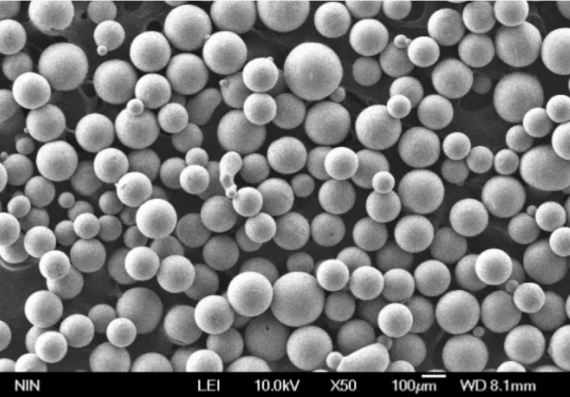
자주 묻는 질문
| 질문 | 답변 |
|---|---|
| 저합금 분말은 무엇에 사용됩니까? | 저합금 분말은 자동차, 항공우주 및 공구와 같은 산업에서 고강도, 내구성 부품을 제조하는 데 사용됩니다. |
| 저합금 분말은 어떻게 만들어집니까? | 저합금 분말은 일반적으로 분무를 거쳐 소결 또는 열간 정수압 성형(HIP)을 통해 만들어집니다. |
| 저합금 분말을 사용하면 어떤 이점이 있습니까? | 이점에는 향상된 기계적 특성, 비용 효율성 및 다양한 응용 분야에서의 다용도성이 포함됩니다. |
| 저합금 분말의 제한 사항은 무엇입니까? | 제한 사항에는 합금 원소의 제한된 범위, 잠재적인 취성 및 극한 환경에 대한 제한된 적합성이 포함됩니다. |
| 적합한 저합금 분말을 어떻게 선택합니까? | 저합금 분말을 선택할 때는 필요한 강도, 내마모성, 내식성 및 비용과 같은 요소를 고려하십시오. |
| 저합금 분말을 맞춤화할 수 있습니까? | 예, 저합금 분말은 특정 요구 사항을 충족하기 위해 합금 원소의 조성을 조정하여 맞춤화할 수 있습니다. |
| 저합금 분말은 비쌉니까? | 가격은 조성 및 공급업체에 따라 다르지만, 저합금 분말은 일반적으로 고합금 대안보다 저렴합니다. |
| 어떤 산업에서 저합금 분말을 사용합니까? | 주요 산업으로는 자동차, 항공우주, 석유 및 가스, 공구 및 의료 기기가 있습니다. |
| 저합금 분말은 가혹한 환경에 적합합니까? | 내마모성 및 내식성이 향상되지만, 저합금 분말은 고합금 분말이 필요할 수 있는 극도로 가혹한 환경에는 적합하지 않을 수 있습니다. |
| 저합금 분말의 품질은 어떻게 보장됩니까? | 품질은 ASTM 및 ISO와 같은 산업 표준 준수뿐만 아니라 순도 및 입자 크기에 대한 엄격한 관리를 통해 보장됩니다. |
결론
저합금 분말 은 현대 제조에서 없어서는 안 될 재료로, 광범위한 응용 분야에 적합한 고유한 특성의 조합을 제공합니다. 자동차 부품에서 항공우주 부품에 이르기까지, 이러한 분말은 오늘날의 고성능 산업에 필요한 강도, 내구성 및 정밀도를 제공합니다.
저합금 분말의 조성, 특성 및 응용 분야, 그리고 다양한 모델의 장점과 제한 사항을 이해함으로써 특정 요구 사항에 가장 적합한 재료에 대해 정보에 입각한 결정을 내릴 수 있습니다. 성능 최적화, 비용 절감 또는 수명 보장을 원하든, 저합금 분말은 요구 사항을 충족하도록 맞춤화할 수 있는 다용도 솔루션을 제공합니다.
프로젝트에 적합한 저합금 분말을 선택할 때는 조성, 비용, 공급업체 신뢰성 및 응용 분야별 요구 사항을 포함한 모든 요소를 고려하십시오. 올바른 선택을 통해 우수한 결과를 얻고 제조 노력을 성공적으로 이끌 수 있습니다.

